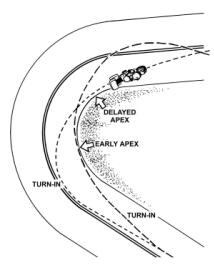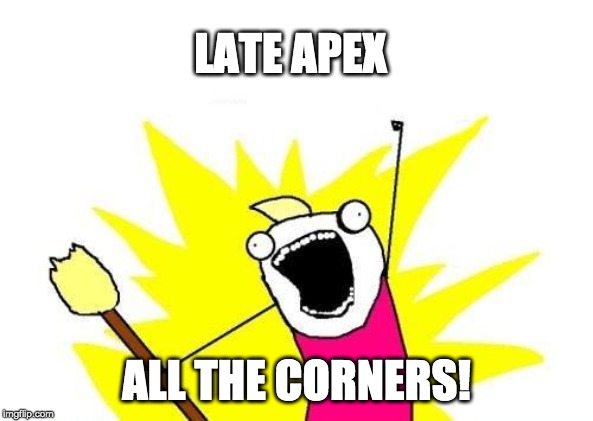First of all, kudos to you for asking the question.
As others have suggested, a late apex is generally your friend when you’re still building your seat time on corners. If you’re unsure about how to translate late apex into your actions on the bike, here’s another way to think about it.
On any corner - left or right - stay wide until you can see the exit of the corner and thus plan your apex. In doing this, you must plan ahead and adjust your speed so that you:
A) don’t run wide (into oncoming traffic on a right hander; off the road on a left hander).
B) can tighten your line at any time in order to avoid a hazard, or hit your desired apex.
So what does that mean in terms of entry speed? It means you must slow way down - sometimes more than you end up needing to - in order to achieve the above two points. Even if you don’t run wide, if you can’t tighten your line mid corner it means you’re going too fast. Slow down more!!
One of the biggest mistakes new riders (and some not so new riders) make is “charging” the corner. They are going in too fast and find they need to get off the throttle and sometimes brake all the way around the corner. This is *not* trail braking. This is blowing the corner.
You’re better off entering blind corners slower than you think you can go, and leaving yourself enough room to change line as needed. On tight mountain roads you might encounter oncoming big rig gravel trucks, 33’ RVs, dualies pulling 20’ horse trailers, etc. that come across the center line into your lane on your right hand corner. If you’re going so fast that you can’t change your line or even stand the bike up and stop, you’re going to be in trouble.
The speed will come to you with experience. Don’t charge the corners!


